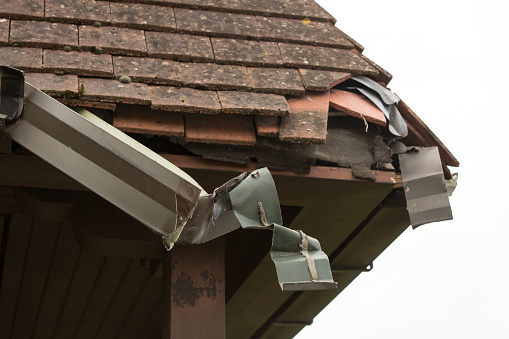
Your roof can be one of the most important features of a home or building; it provides protection from the elements and can improve the overall appearance. As such, regular roof inspections should be carried out to make sure that everything is in good condition and functioning properly.
Here are 10 things a contractor should look for during roof inspections:
Attic’s Ventilation
The attic should be well-ventilated to ensure that moisture and heat can escape while cold air can enter. A contractor should check all vents and attic openings to make sure they are not blocked or leaking. Additionally, the contractor should check for any signs of water damage or condensation, which can indicate a ventilation problem.
Signs Of Water Leaks
Water leaks can be a major source of damage to a roof, so it is important that they are detected early. A contractor should check for any signs of water leaks or other moisture problems, such as stains or discoloration on the ceiling or walls. There are some hidden areas that may not be visible from the ground, so a contractor should take time to look for anything unusual. There are some tools that can be used to help with this, such as infrared thermometers and moisture meters.
Structural Damage
The contractor should also check for any structural damage on the roof. This includes checking for loose or missing shingles, tiles, or other components. Additionally, it is important to look for any cracks or gaps that may have formed over time. If any structural damage is found, it should be repaired as soon as possible to prevent further damage.
Drainage System
The drainage system of a roof should also be checked during an inspection. This includes checking the gutters, downspouts, and other components to make sure they are clear and functioning properly. A contractor should look for any blocked or clogged drainage systems and ensure they are all properly connected.
Number Of Layers On Your Roof
Your contractor should check the number of layers on your roof during an inspection. This is important as having too many layers can negatively affect a roof’s performance, making it more prone to damage and leaks. Generally, two layers are ideal for most roofs; however, some may need more or fewer depending on their location and other conditions.
If there are many layers, your roof replacement estimate will include the layers that need to be removed.
The Condition Of Your Roof Decking
The roof decking is the layer of material that lies underneath your shingles. Over time, it can become warped or cracked and should be inspected to ensure it is in good condition. They’ll test if the decking is solid or spongy underneath their feet. If it’s spongy, the contractor will need to replace it with a new decking material.
The contractor will also check if any nails are popping up and if any wood has rotted. If there is, the boards will need to be cut out and replaced with new ones.
Roof Vents
Regardless of whether your roof has a ridge vent, turbine vents, or other ventilation systems, they should all be checked. The contractor will ensure that the vents are properly installed and functioning to ensure optimal airflow and reduce moisture levels in the home.
Your roof ventilation plays an important role in the lifespan of your roof, so it is essential that these systems are inspected regularly.
Flashings
The flashings around your roof should be checked during an inspection to ensure they are properly sealed and intact. This includes checking for any signs of rust or corrosion, which could indicate a need for replacement. A contractor will also ensure that the flashings are securely fastened and free of any gaps or cracks.
Roof Penetrations and Skylights
Your contractor should also check for any roof penetrations or skylights that may be present on your roof. These are areas where water and air can enter, so they need to be inspected to make sure they are properly sealed and free of any cracks or leaks. Any damage found should be repaired right away to prevent further damage.
The contractor should also check for any debris or other obstructions that may be built up around the penetrations and skylights, which can cause issues with airflow.
The Chimney
One overlooked yet important area to inspect is the chimney. Your contractor should check for any cracks or gaps in the mortar and brickwork as well as any rusting flashing, which could indicate a need for repair.
Additionally, they should also check that all components are securely fastened and properly sealed. This includes checking that the caps, covers, and other components are in good condition and properly installed.
Gutters and Downspouts
The gutters and downspouts should be checked during an inspection to make sure that they are clear of debris and functioning properly. If any blockages or damage is found, then the contractor will need to clean out the gutters and repair any broken components.
Lastly, a contractor should check if any water is pooling around the house or in the yard and make sure that the downspouts are properly connected to drainage systems.
By following these steps, a contractor can ensure that your roof is safe and secure and that all components are functioning correctly. If any damage or other issues are found during an inspection, then they should be addressed right away to prevent further damage. Taking the time to inspect your roof regularly can save you money and headaches in the long run. Investing in regular maintenance of your roof will help ensure that it remains safe and secure for years to come.
